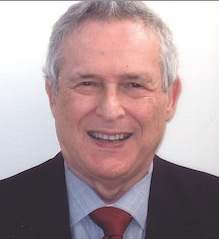 |
| Arthur Solomon |
When it comes to media pitching, unfortunately, too many account executives, both novice and experienced, still rely on the hackneyed advice they learned in communications schools, often by professors who have not been on the firing line for years.
Playing it by the book may extend your career at an agency. But if you want to separate yourself from the pack, going against the established grain is the fastest way of getting yourself recognized by enlightened top management.
You have a better chance at having editors and producers look at your pitch and impressing agency higher-ups by thinking out-of-the box. This is what I’ve told hundreds of account executives during and after my nearly 25 years at Burson-Marsteller when making presentations at major agencies on behalf of a media company.
Here are some media pitching tips that that I’ve always used and that most likely have not been covered in communication schools textbooks, including some important against-the-grain recommendations.
-
It’s easier to get direct e-mail addresses or the name of the correct person to pitch if you call news desks late at night or on weekends, when the gatekeepers are gone.
-
Despite conventional advice, don’t limit your pitch to only a subject line. Write two or three (or even four or more) detailed graphs that fully explains your story. (I’ve been in the PR business for a long time, and previously was a reporter and editor. I have never been told that my pitches are too long. Why? I always target the proper individual and draft my pitches as if I was still a journalist so the person on the receiving side can see how a story might flow.)
-
When attempting to place a photograph don’t waste time by trying to write a short, cute caption. It’s not the caption; it’s the image that counts. Just give the editor an interesting photo with detailed information. They can write their own captions (and they’re probably better at it than you are).
-
Many account people disregard TV outlets if they don’t have strong visuals to accompany a story. That’s wrong thinking. The strength of a story is the most important element. Visuals can always be worked out with a segment producer; also, many interviews are nothing more than the much-maligned talking heads, which is often a no-no according to teachers of public relations.
-
Never approach assignment editors with a straight story pitch, unless you have a “must use, can’t miss” story. Always have a few different story angles that you can throw out to the editor.
-
Think broadly. Explain why your story fits into a larger news picture. For example, if you’re pitching a shoe company’s new line, think of proper foot care; for a financial institution, household money management; for a health-related product, stress the importance of proper use of all products, not just the one you’re pitching; for a sports-related product, how to limit injuries because of weather conditions. If your story is strong enough, most likely you’ll get your own segment. If it’s a weak story, giving various options can make it usable. Editors and producers appreciate when you provide various options. That’s how you make media friends.
-
Extend the shelf life of your story by thinking long term and suggesting feature as well as hard news angles.
Unfortunately, creativity is often limited to client programming. In accounts that I am involved with, I always factor placement creativity into the program planning.
For those wanting to broaden their creativity skills, reading the daily newspapers are a great resource. It provides an easy, inexpensive way to see how many different angles a news article can take by comparing the same story in The New York Times and The Wall Street Journal. Then read editorials and letters to the editors regarding the story. Do that every day —and you should anyway if you’re in the PR business—and you’ll see how the same story can be approached in various ways.
Arthur Solomon was a senior VP/senior counselor at Burson-Marsteller, and was responsible for restructuring, managing and playing key roles in some of the most significant national and international sports and non-sports programs. He now is a frequent contributor to public relations and sports business publications, consults on public relations projects and is on the Seoul Peace Prize nominating committee. He can be reached at [email protected].
